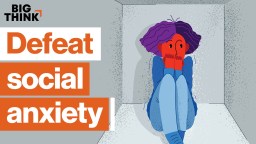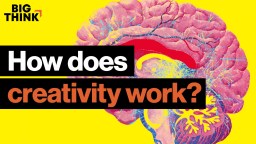BRENT GLEESON: SEAL training is 18 months long. We talk about discipline, we talk about trust, accountability, mental fortitude. Very, very high attrition rate. For my class only about 10 percent ultimately graduated of the original class. But the first six months of that 18 month training pipeline is called BUDS, which stands for Basic Underwater Demolition SEAL. And the first three weeks of BUDS are leading up the Hell Week. And those three weeks are no joke either. They're just as bad as Hell Week, but you get to sleep a couple of hours a night. But then Hell Week is where you're going to weed out the rest of your class. By the end of Hell Week 80 percent of your class is gone. Hell Week starts on a Sunday, ends on a Friday afternoon, and the great thing about that Sunday is the class will report to one of the main classrooms with only a couple required items in their possession and we don't allow them to know when Hell Week will commence, when breakout starts. And it's pure chaos. Guys will quit minutes into breakout. And so the anguish, the anxiety is just killing you. It's a fascinating thing to watch. Not a fascinating thing to be a part of. So that afternoon our class leader, who's the highest ranking officer in the class, he read us – one of the things he did to motivate us was to read us the speech, the St. Crispin's Day speech from William Shakespeare's Henry V. And a great excerpt that many people know from that speech is, "We few, we happy few, we band of brothers. For he today that sheds his blood with me shall be my brother."
ERIC GREITENS: If there was a single question that you can ask someone to measure how resilient they're going to be, you ask them what are you responsible for. And what you find is that even in the most difficult situations when you look at stories of people who have been prisoners of war, for example. People who survive said I'm going to take control of my thoughts, or I'm going to take control of the way that I breathe. There are certain things even though my freedom has been taken away from me that my ability to eat where I live. All of these things have been taken away from me. I'm still going to control something. And when you focus on actually taking control of something and what happens is your circle of control begins to widen and people begin to see that even in the face of hardship and difficulty, there's a way for them to build power and live a purposeful life.
DAVID GOGGINS: People always ask me how do you build mental toughness. Mental toughness also has these classes out here. A class on mental toughness. Positive thinking, visualization, all these different techniques—mental toughness is a lifestyle. It's something that you live every single day of your life. When I was growing up I was a lazy kid. I was a lazy kid and everyone goes how did you get to where you're at today? How did you get to where you're running 200 miles at one time in 39 hours being so disciplined. It started off honestly with recognizing that my bedroom was dirty. My bed wasn't made. I lived a sloppy life. So I took very small increments in my life. I started making my bed. I started cleaning my room. I started doing things, coming outside of my lazy ways to become better. And through a period of time your brain doesn't like it, but it starts to realize this is a new way of thinking. We are now doing things that we are uncomfortable doing. We are doing things that we don't want to do. So the brain starts to slowly grow. And let's say you don't like to get up early in the morning time to go run. I hated it. I still hate it. You do that. You live uncomfortable to gain growth. You have to have friction in your life to gain growth. And the only way to do that is to make yourself uncomfortable and get to the point where instead of running from the things you don't want to do, you actually face them and start to gain more and more growth in your life.
GREITENS: Everybody has to deal with hardship. Everybody has to deal with struggle and there's this great quotation from Hemmingway. "The world is a hard place," he said. "And the world breaks everyone," he said. "And many are strong at the broken places." Now people often remember this phrase strong at the broken places but it's also important to remember his qualifier – many. Not all are strong at the broken places. And some people when they confront hardship actually end up in a place where they're helpless. Some people are broken by suffering. Some people are actually really hurt by pain in such a way that they can't move forward. But it's also the case that some people deal with hardship and become heroic.
GOGGINS: I work out hard every day because I know the first thing in the morning what I do is I clean my room, I clean my house, I go for a run, I work out. I want to win the war in the morning, because the second I leave my house, the second you look at your phone, the second you turn your TV on you're in a battle. If you do it, if you do something you don't want to do every morning, you're already giving yourself the proper self-talk. You're already giving yourself the proper dialogue to attack the people that don't like you, to attack your insecurities, to attack what the world's going to give you. So self-talk comes from belief in yourself. So I realize for me to find growth I had to face all of these different things that made me very, very uncomfortable. One thing I faced was running.
JESSE ITZLER: I was running this race as part of a six person relay team with friends and he was running the entire race by himself.
GOGGINS: Where you run around a one mile track for 24 hours to see how many miles you can get.
ITZLER: And the run was unsupported so you have to bring your own supplies. So we had, we overdid it a little bit. We had a tent and we had masseuses and food. I mean we were ready for like in case we had to stay there a week. And he had a folding chair, a bottle of water and a bag of crackers. And I just thought to myself like who is this guy. I've never seen anything like it.
GOGGINS: Around mile 30 I started feeling my shins starting to get extremely sore and I started to develop stress fractures, shin splints. I started feeling the metatarsals in my feet starting to break at around mile 50. By mile 70 I was totally destroyed. All I could think about was how can I get out of this chair. I have 30 miles to go. And everything I had gone through I realized that the human mind if you can put it in a very quiet, calm place and get it to calm down and not be so spastic that you could possibly make this work out for you. How bad are you really.
ITZLER: He weighed probably 260 pounds which is quite large for an ultra runner. He had broken all the small bones in both of his feet and had kidney damage and he finished the race.
GOGGINS: Once the mind knows you're not going to quit something it's going to try to find more. It's going to give you more. Once it realizes you're not going to take the path of least resistance. You're going to stay here until it's done. My mind and my body and my spirit became one for the first time ever. I'd overcome so many obstacles in my life and this was the final crucible for me and I got through it. And at the end of this race was such clarity to me.
ITZLER: So when it was done I Googled him and he had a fascinating life story and I decided literally to cold call him. And I flew out and met with him and after sitting with him for a couple of minutes I realized that I could learn so much from a guy like this and what makes him tick and various buckets in my life would be so much better if a little bit of what he had rubbed off on me. I asked him to come live with my family and I for a month. The first day that SEAL came to live with me he asked me to do – he said how many pull-ups can you do? And I'm not great at pull-ups. I did about eight, just getting over the bar eight. And he said all right, take 30 seconds and do it again. So 30 seconds later I got up on the bar and I did six struggling. And he said all right, one more time. We waited 30 seconds and I barely got three or four and I was done. I mean couldn't move my arms done. And he said all right, we're not leaving here until you do a hundred more. And I thought there's no – well we're going to be here for quite a long time because there's no way that I could do a hundred. But I ended up doing it one at a time and he showed me, proved to me right there that there was so much more. We're all capable of so much more than we think we are. He would say that when you're mind is telling you you're done, you're really only 40 percent done.
GOGGINS: The 40 percent rule is something I designed also when I was growing up. I realized when I was almost 300 pounds that I could have lived the rest of my life being a 300 pound person never knowing what was truly inside of me. I could have been happy with that person. I was living at about 40 percent. Maybe not even 40 percent.
ITZLER: And he had a motto, "If it doesn't suck, we don't do it." And that was his way of every day forcing us to get uncomfortable, to figure out what our baseline was and what our comfort level was and just turning it upside down.
GOGGINS: When our brain starts to go through suffering. When our brain starts to go through pain or starts to go through insecurities, when we start to feel uncomfortable with ourself, our brain gives us a way out. And that way out is usually quitting or taking the easier route. If we're able to look at ourselves and face whatever we're running from you start to gain more percent on top of that 40. You start to realize okay, you start to slowly take that governor off your brain.
ITZLER: The 40 percent rule, maybe it's give or take a little, but look at a marathon. Most people hit the wall in a marathon at mile anywhere from 16 to 20. Ninety-nine percent of the people in this country that run marathons finish and they all, predominantly all of them go through this hit the wall. So where does that extra 50 or 60 percent or whatever the number is come from? I mean it's their brain saying I'm done, I don't want to continue, but their will saying you know what – let me get to the finish line. So we all have that will. It's just a matter of how do we apply it to not just with the once a year marathon, but to our daily lives.
GOGGINS: And usually whatever's in front of you isn't as big as you make it out to be. We start to make these very small things enormous because we allow our minds to take control and go away from us. We have to regain control of our mind.
JAMIE WHEAL: The Navy SEALs are probably right there on the cutting edge of deploying advanced technology to accelerate their performance in the field and to accelerate their performance in forming and leading teams. There are probably three major areas in their bodies and brains they focus on. The first is neuroelectric activity so what is happening in our brainwave states as we go into stressful situations. Our heart rate and the quality of our cardiac rhythm. So not just how many beats a minute are our hearts beating under stress, but literally what is the quality. Is it anabolic meaning healthy and positive, or catabolic meaning unhealthy and destructive in my cardiac rhythm? And then even galvanic skin response. So how much is my system under stress or strain and sweating kind of the same metrics that are used in lie detector tests, polygraphs and those kinds of things. And they actually have very robust vests filled with sensors that will allow teams to go through operations and have commanders being able to see on a laptop up to 50 operators at once and being able to monitor all of their activities in the field, see who's fallen down, see what their core body temperature is. See a host of biometrics in their mind gym which is unique and specific to dev group, which is more popularly known as SEAL Team Six, but their official name is Special Warfare Development Group. Those guys also have an entire center built called the mind gym and it's dedicated to deeper dives for training and recovery. And amidst all the other tools that we've just discussed, they are also making use of sensory deprivation as a recovery and learning aid. And sensory deprivation tanks which are usually sort of – they look like giant egg-shaped pods and they're filled with basically lukewarm sort of super salty bathwater that's very buoyant. So you go into them and you close the hatch and you're floating in pitch black darkness with no reference points.
What dev group is doing now is they're adding in twenty-first century biometrics into that experience. And so they are adding audio and visual feedback as well as biometrics. So again, brainwaves and heart rate variability. And they're able to steer operators into an optimum state of physiological and neurological relaxation and then introducing new content. One of the examples that they shared with us was the learning of foreign languages. In the past that's been a minimum of a six month cycle time. And so you take highly trained operators and you have them sitting on the bench learning a foreign language before being deployed. That's incredibly inefficient. By combining these sensory deprivation tanks with next generation biofeedback these guys have been able to reduce a six month cycle time in learning a foreign language down to six weeks. So that's basically cutting it in a quarter.
GLEESON: One of the interesting evolutions that the individual and the class goes through in the early stages of SEAL training is it goes from an individual sport where you're trying to be one of those small percentage of people that graduate very quickly to a team sport where you're learning to work together as a team. You're learning to have that team community, that bond and that shared sense of purpose, those shared values, that team ability so to speak to put the team before yourself. The most important element of our culture is team. We refer to the naval special warfare community as the teams. We refer to each other as team guys. That is part of our culture. It is team first and nothing else. And people who don't embody that mindset obviously don't make it very far through training. And that applies to any organization, really any relationship. Marriage, for example, is not a 50-50 thing. It's a 100 percent thing if you want it to be successful. And in a business organization that will thrive and will grow you have that level of trust, that level of team minded approach to every single thing you do. People do not stay isolated and siloed in their lane, in their bunker. They cross barriers. They collaborate. They build organically cross-functional teams that allow the organization to be agile, to be dynamic, to be collaborative, to be communicative. Those are the organizations that are resilient, that grow, that maintain a healthy financial status, and it's an easy correlation to draw between the SEAL teams and our importance of teamwork and trust to fulfill our vision just as it is to any organization that wants to compete and thrive in the twenty-first century.
GOGGINS: We're all going through a battle in our mind. A warrior is not a person that carries a gun. The biggest war you're ever going through is right between your own ears. It's in your mind. We're all going through a war in our mind and we have to callous our mind to fight that war and to win that war.






